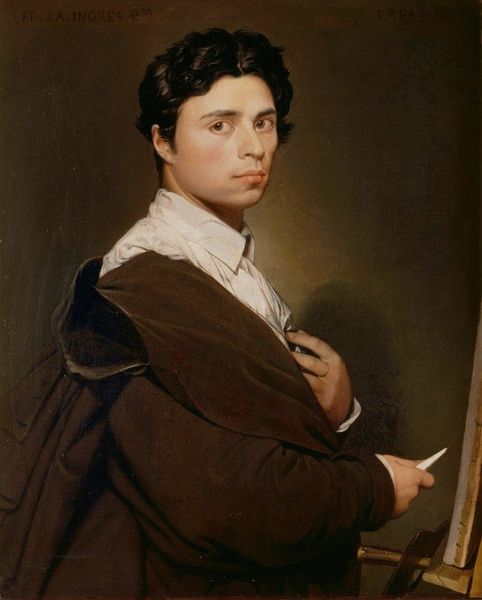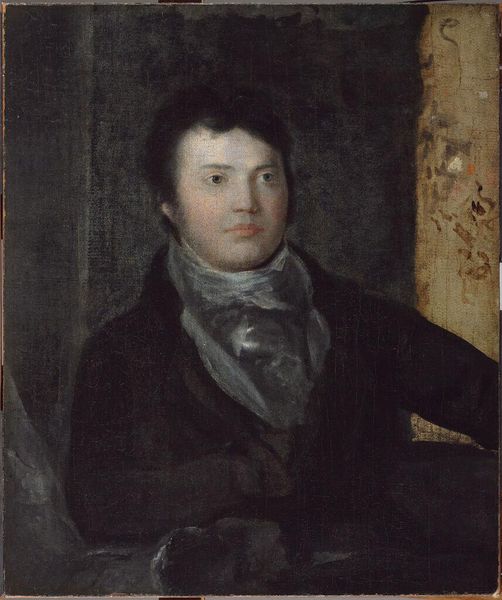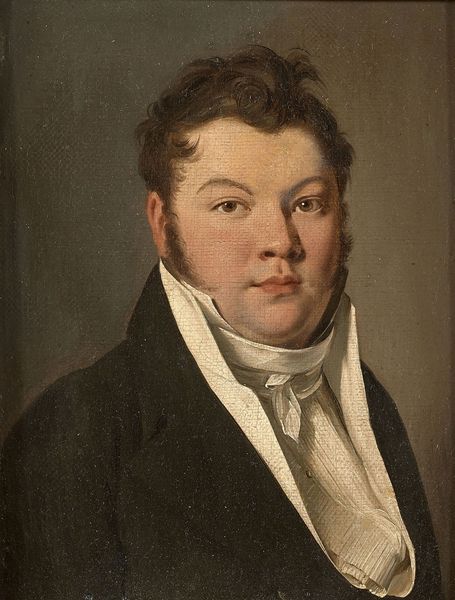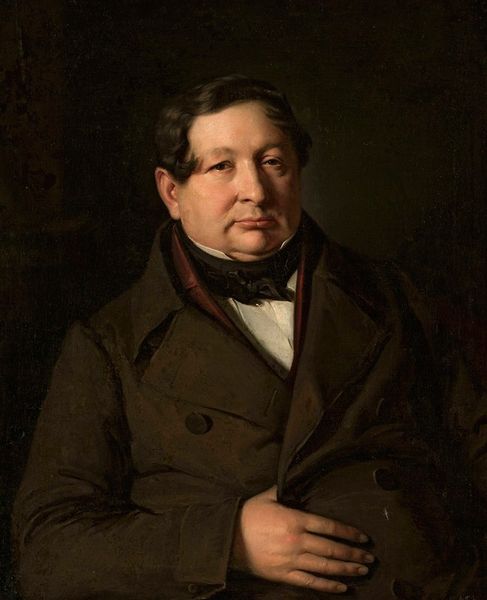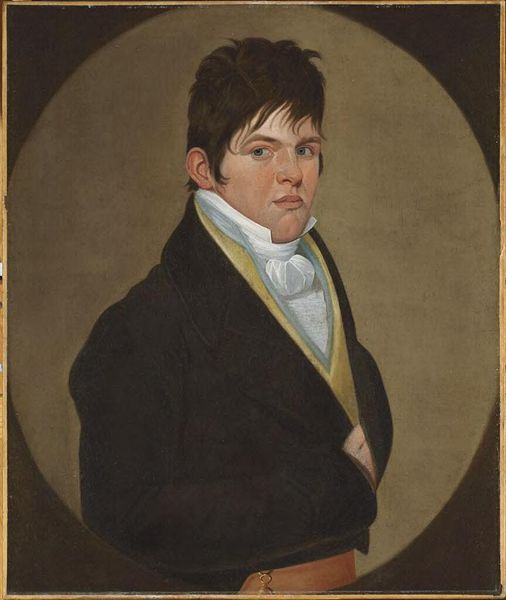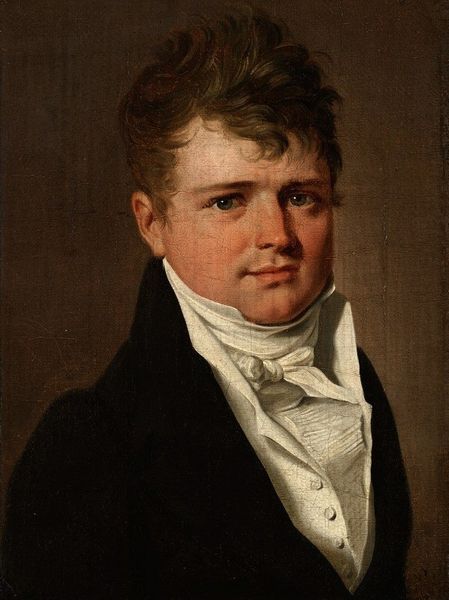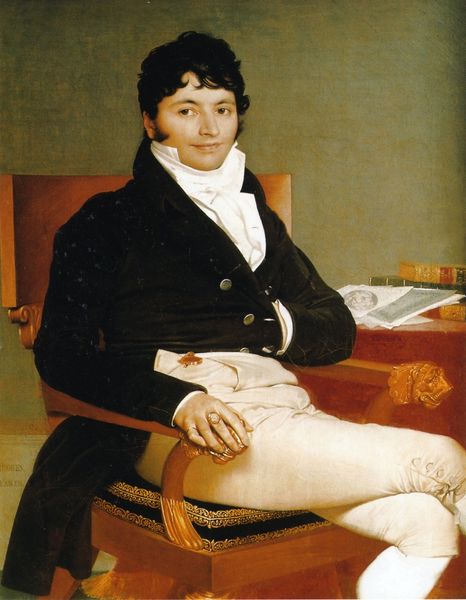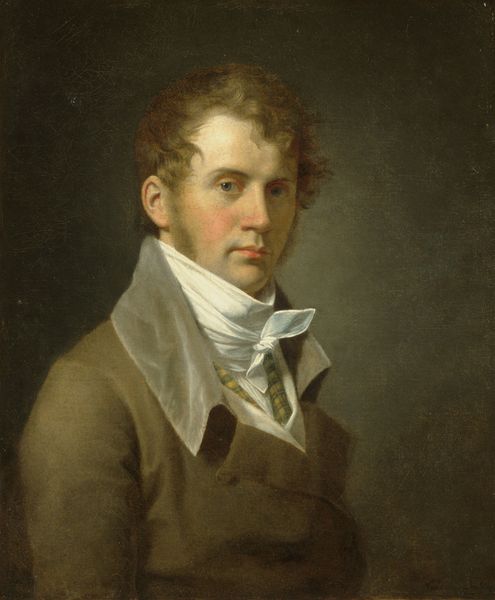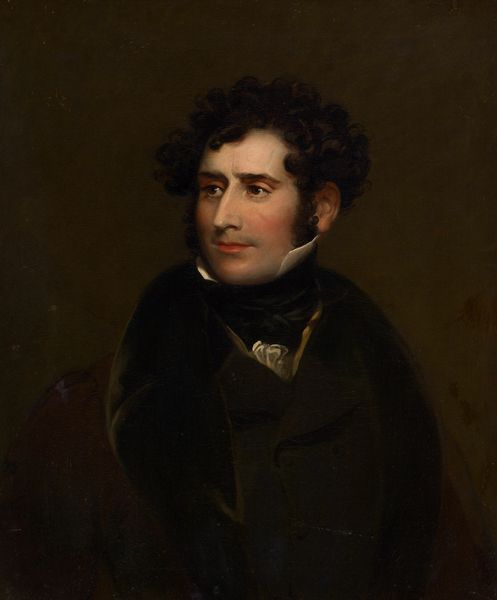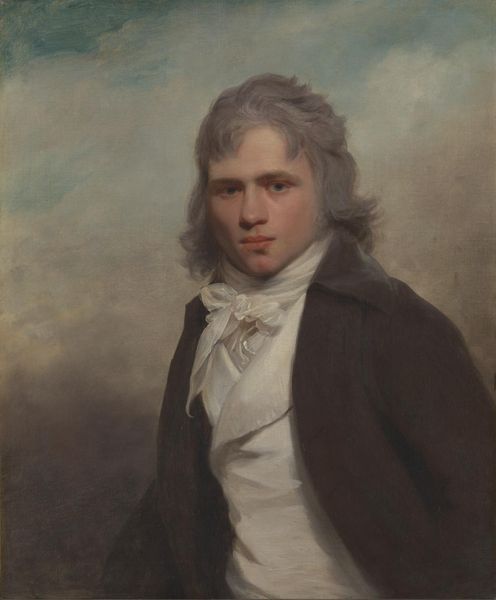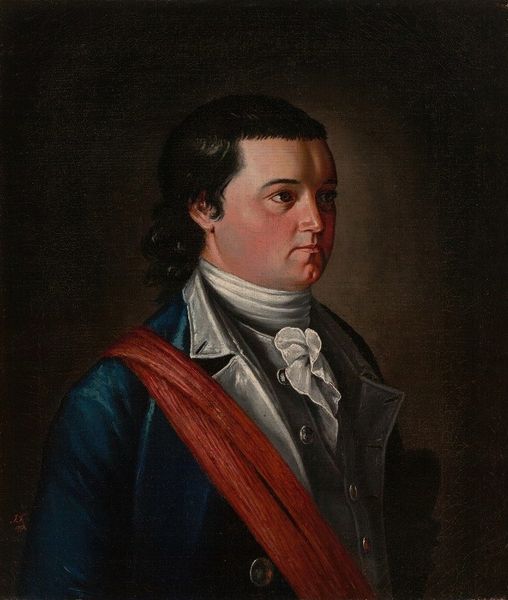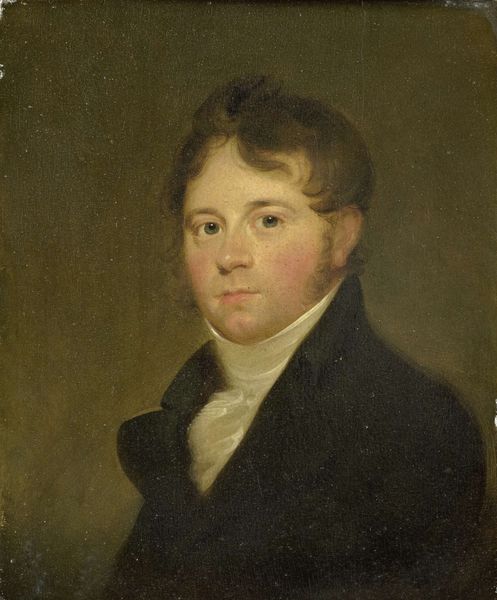
painting, oil-paint
#
portrait
#
figurative
#
neoclacissism
#
painting
#
oil-paint
#
romanticism
#
history-painting
Copyright: Public Domain: Artvee
Curator: Ingres painted this portrait of Joseph-Antoine Moltedo around 1810, deploying oil paint on canvas. I’m particularly struck by how the muted palette is punctuated by that dramatic Roman landscape in the background. Editor: Yes, the overall effect is somber. It’s as if Moltedo is being presented against the backdrop of a fading empire, mirroring the transient nature of personal identity. He looks almost burdened by his heavy coat. Curator: Burdened perhaps, but also dignified. Note how Ingres balances the cool tones of the coat and stormy sky with the warmth of Moltedo’s face. His expression, while reserved, exudes a sense of self-assuredness. Editor: I wonder what role the rise of Neoclassicism played? We're seeing this return to these idealized forms, but set against the Napoleonic era and burgeoning bourgeoisie, the subject’s gaze lacks an aristocratic remove. His image is being used to advance certain power structures. Curator: Indeed, the composition here—the placement of the figure, the precise rendering of fabric, and the interplay of light and shadow—creates a formal harmony indicative of the Neoclassical movement. Ingres employs a shallow depth of field, which draws attention to the tactile quality of the materials themselves. Editor: Though that subtle landscape situates Moltedo firmly within the theater of European political and cultural power, with the Colosseum looming in the distance to symbolize Rome's lasting significance. But the heavy clouds also reflect an unstable Europe! Curator: Absolutely. Ingres cleverly juxtaposes the ephemeral nature of human presence with the timelessness of historical landmarks. The swirling sky hints at change, a concept reinforced by the Romantic tendencies bubbling under the surface of that otherwise constrained pose. Editor: Overall, considering the context of Napoleon's reign, the subject becomes a testament to both historical continuity and socio-political tensions. And Ingres' skillful handling of those contextual and formal tensions makes for a captivating composition. Curator: An astute summary! Reflecting on Moltedo’s character and how Ingres captured it remains a fruitful exploration in these halls. Editor: Agreed, viewing it has truly expanded my thoughts about the role portraiture had for Europe’s powerful classes.
Comments
No comments
Be the first to comment and join the conversation on the ultimate creative platform.

